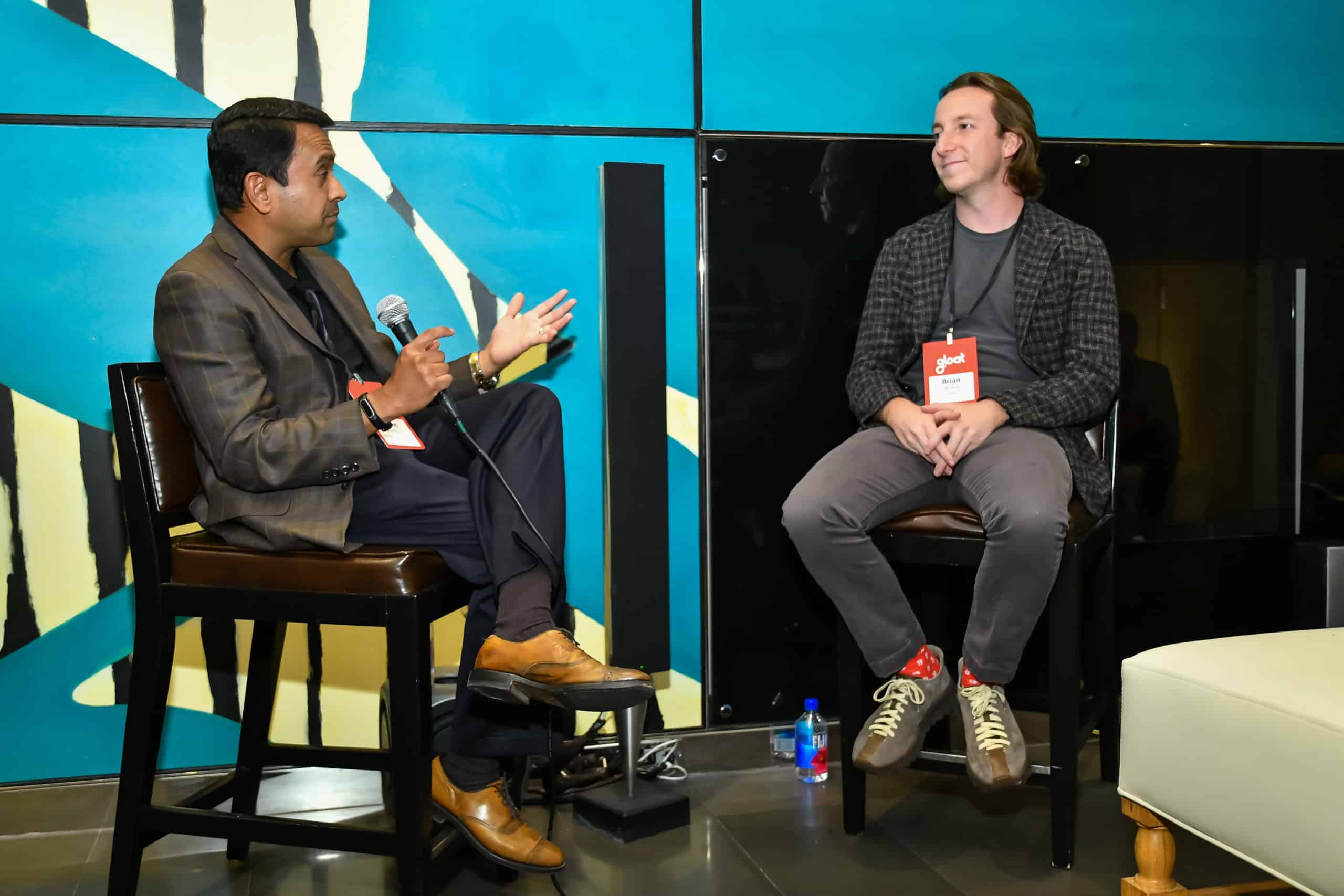4 strategies to stop talent hoarding from sabotaging internal mobility
Supporting managers to shift their mindset and maximize agility

For a long time, internal mobility was overlooked in favor of external recruitment. Most skill and capability needs were grouped into open roles, which would, in turn, be filled by new candidates. And when it comes to priority work, managers historically have been protective of their resources, hesitant to share talent across teams.
This has left organizations reliant on a system of tapping the same individuals to get work done, or hiring external services and contractors to create capacity.
But labor shortages today are severe, and tightened budgets make external resources more challenging to secure. The result? Leaders are reconsidering internal mobility and talent sharing practices.
And this shift has the potential for big returns. Internal mobility isn’t just a powerful hiring and resourcing tool; it’s also a surefire way to improve engagement and retention. Our research reveals that more than two-thirds of employees would like the chance to pursue new opportunities within their organizations.
However, there’s one threat that can sabotage even the best internal mobility strategies: talent hoarding. It remains a widespread phenomenon, with 50% of employers reporting that at least one of their managers is guilty of holding onto talent too tightly.
What is talent hoarding?
Talent hoarding describes the tendency of managers to keep employees on their team or to restrict their cross-functional collaboration opportunities, even when this worker is interested in branching out and lending a hand to other teams. This behavior limits an employee’s professional growth and prevents other managers from tapping into their skill sets.
While talent hoarding most often results from an illusionary fear of dipping team productivity, it has real-life consequences on team morale, engagement, and retention. The “hoarded talent” feels stagnant or trapped in their current role when their ambitions lie elsewhere within your business. Over time, these employees start to believe that their best chance of pivoting their careers or growing different skills lies outside of your organization.
But pinning all of the blame on managers won’t solve the issue. HR leaders, as shepherds of organizational culture, can play an active role in supporting managers in adopting the mindset shift from talent hoarding to talent sharing. In this article, we’ll dive a little deeper into the most common pitfalls of talent hoarding and then lay out four strategies people leaders can spearhead to support talent sharing within their organizations.
The dangers of talent hoarding
A damper on internal mobility, talent hoarding creates a dangerous domino effect that negatively impacts your employees, managers, and business in the following ways:
Impact on managers
Managers may feel like talent hoarding helps them, but in the long run it does more harm than good. If managers are overly reliant on the same handful of people, they will have a hard time filling their shoes when those employees inevitably leave. They may also miss out on opportunities to strengthen their managerial skill sets by gaining experience working with different types of employees and teams.
In contrast, managers who promote a culture of talent sharing will gain invaluable experience driving cross-functional projects. They will be seen as leaders who are committed to growing and developing people and will stand out to their leaders as compotent people managers who are well-equipped to deal with the time management and resourcing challenges that come with their role.
Impact on employees
Talent hoarding can also be detrimental to employees. When employees feel like their career options are limited and their managers aren’t committed to their long-term goals, they will feel disengaged and struggle to see a future with their organizations. They’ll also lose out on opportunities to expand their skill sets by pitching in on cross-functional collaborations. Over time, employees may come to resent managers who they feel are limiting their career growth, leading to tension within their teams and poor performance.
Impact on the organization
When managers make a habit of talent hoarding, the whole organization ultimately suffers. Silos builds and teams lack awareness of what other parts of their business are doing and how they can collaborate. Employees also miss out on opportunities to build new skills by pitching in on projects and working with different sets of coworkers.
Over time, turnover rates will tick up as employees begin to grow dissatisfied with their subpar career development opportunities, meaning the organization will have to spend big to recruit, hire, and onboard new talent to replace them. Talent hoarding companies also end up paying more for outside services and often need to delay critical processes due to a perceived lack of resources, ultimately stymying growth and innovation and raising costs for the business.
Why do managers hoard talent?
Given all the dangers associated with talent hoarding, it’s natural to wonder why managers do it in the first place. Understanding what motivates talent hoarding will help you create pathways to discourage it. So here are a few reasons why people turn to talent hoarding:
Fear of losing productivity
Managers are under a lot of pressure to keep output levels high and execute their leaders’ priorities. In order to meet expectations, they may turn to the same subset of employees who they trust to complete projects on tight deadlines. While managers may initially be concerned that other employees won’t be up to the challenge, ultimately talent sharing will help employees across the organization learn how to work efficiently with various team members and project leaders.
Lack of internal mobility options
Another reason why managers are often reluctant to share talent is because they fear that they won’t be able to tap into other team’s resources. If internal mobility isn’t a common practice at your organization, managers may not trust that employees from other groups or departments will step up to help them complete high-priority projects. The more internal mobility is practiced, the less fearful managers will be when it comes to talent sharing.
Desire for control and recognition
As team leaders, some managers may feel like they need to keep track of their direct reports and have the final say in what projects they work on. However, managers who are overly controlling are likely to damage their relationships with their direct reports. Rather than deciding which opportunities employees should pursue, managers should empower their direct reports to take ownership of their careers.
4 Strategies to prevent talent hoarding in your organization
It’s impossible to promote internal mobility when talent hoarding is part of your organization’s culture. Putting a stop to it requires HR leaders to support managers in adopting a talent-sharing mindset. When done successfully, managers feel empowered to tap (and share) employees throughout the organization when carrying out projects and deliverables.
So what does it take to get started? Here are 4 tactics you can use to prevent talent hoarding and promote talent sharing:
#1. Launch company-wide cross-functional collaboration opportunities
Most organizations value collaboration, but just how far do your group-working practices go? Employees should be empowered to contribute to projects, not only with their direct teams but throughout your organization. For that to happen, HR leaders need to devise initiatives that will inspire people to work together in new and dynamic ways.
Whether you start by designating a few projects as company-wide collaborations or hosting offsites that shuffle employees into different teams, executives should get creative when developing cross-functional opportunities. Once managers see that talent sharing is an important part of your culture, they will be inspired to support it by following suit.
#2. Empower managers to look beyond immediate teams
Most managers have a few high performers they trust to execute high-priority tasks. While tapping the same handful of people might feel like the most efficient way to meet deadlines, it’s not doing your workforce or company innovation any favors. When managers fail to look outside of their immediate teams, they overlook talented employees with the skills and capacity needed to carry out key tasks.
To get there, managers must have a full picture of the skills and competencies within their workforce—which skills intelligence tools like Gloat’s Skills Foundation readily enable. Once they’re able to visualize broader talent pools, managers will feel confident that they have the needed resources to get key projects across the finish line.
#3. Let your people take the lead
Do your managers tell their reports what their next steps should be? Or do they ask them about their ambitions and help them develop a path to achieve them? Talent-hoarding supervisors are likely to spell out what employees should do next to ensure they keep these workers on their teams—or at the very least in the organization.
Employees are the ones who should sit in the driver’s seat of their career progression—not their managers. When workers are empowered to make their own career decisions, they’re more likely to be engaged in the work they’re doing and inspired to push their performance to the next level.
#4. Take advantage of talent marketplaces
Going from talent hoarding to talent sharing isn’t an easy transition. It can be especially daunting for managers who fear that they’re losing access to the talent they need to accomplish their key deliverables.
Fortunately, the rise of talent marketplaces means talent sharing no longer needs to be a leap of faith. The platforms match employees to projects, gigs, and full-time roles based on their interests, skills, capacity, and ambitions. As a result, managers feel confident they can access the talent they need across the organization, while employees are empowered to expand their horizons by getting involved in cross-functional projects and experiential learning opportunities.
To learn more about how these platforms work and how visionary companies harness them to unlock agility, check out our talent marketplace 101 guide.





